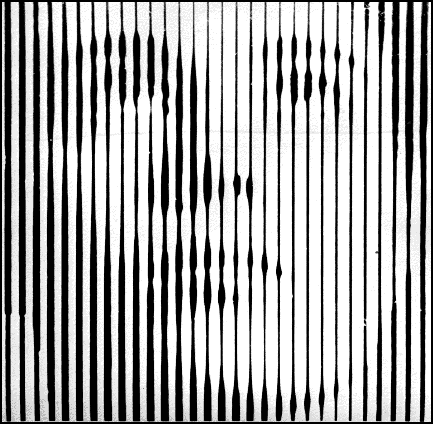Psychosomatic
Headache
 A professionally trained female employee of a state hospital was referred to the writer for therapy after extensive medical study. Her complaint was one of severe headaches for which numerous medical studies had found no physical basis and severe personality disturbances manifested in quarrelsomeness and uncooperativeness. At the time she was seen, she had been given notice of her discharge to take effect either immediately or, if she sought therapy from the writer, in six weeks' time.
A professionally trained female employee of a state hospital was referred to the writer for therapy after extensive medical study. Her complaint was one of severe headaches for which numerous medical studies had found no physical basis and severe personality disturbances manifested in quarrelsomeness and uncooperativeness. At the time she was seen, she had been given notice of her discharge to take effect either immediately or, if she sought therapy from the writer, in six weeks' time.
Under these adverse circumstances, the patient sought out the writer, explained the situation bitterly, and declared that she was confronted with "The choice of wiring home for transportation money or being messed around with by a damn hypnotist." (The fact that the writer was wholly innocent of any responsibility for her situation was totally disregarded by her.) She, added ungraciously, "So here I am. What do you want? Go ahead."
An effort was made to secure her history but she was uncommunicative and remained so throughout the course of therapy. The only material obtained was the following: For the past four years, beginning when she parted ties with her childhood home, she had I been suffering from intense, unlocalized headaches. These sometimes occurred twice a week, were accompanied by nausea, vomiting, and physical incapacitation from two to four hours' duration. They were always associated with intense, inexplicable emotional disturbances characterized by extreme quarrelsomeness, bitterness and violent verbal attacks on everyone about her. Usually, these emotional disturbances presaged the headaches, and upon recovery from that symptom, she would remain seclusive, subdued and somewhat socially adjusted for a day or two until the next attack. This had caused her to lose one position after another, all of her friends and even the possibility of making new friends. Hence, she felt most lonely and wretched about her situation. Every attempt to secure more adequate information from her failed. She resented any questions or even casual conversation about herself. She was embittered by the fact that she had been given notice of her impending discharge and on then had been referred for psychotherapy, "as if to make up for firing me."
A few days later, word was received that she was confined to bed with a sudden headache. She was pale and drawn in appearance, flinched whenever she moved her head or body, and was dazed, slow and unresponsive in her general behavior. A few hours later, she was found recovered from her headaches, spasmodic and excitable in her movements. She spoke in a high-pitched tone of voice, scolded and excoriated everybody and seemed to take a sadistic delight in making cutting, painful remarks. She was most unwilling to discuss her condition, denounced the hypnotist and demanded to be left alone. The next day her characteristic depressive reaction set in; she was silent, seclusive, and occasionally made self-condemnatory remarks.
A few days later, in a pleasant, affable mood, she approached the hypnotist spontaneously for therapy. However, she dismissed all attempts at questioning, declaring politely but emphatically that her only problem was headaches and that all therapy should be directed entirely to that one symptom. If this were done, she explained, her other difficulties would vanish, since they all derived from the headaches and her reactions to them. Finally, it became necessary to accept her on her own terms, with the mental reservation to resort to experimental measures.
Repeated attempts at hypnosis produced only light trances but these were capitalized upon to secure her cooperation as a demonstration subject for a teaching clinic. By this measure, it was possible to induce a profound trance in which she was given adequate training and instruction to permit the induction of deep trances in the future.
During the course of the next four weeks, fifteen deep trances were induced. These trances were utilized to give repeatedly, emphatically, and insistently the following suggestions until, more or less under duress, she accepted them and agreed to obey them:
- Should a headache develop unexpectedly, or should she develop the irritability that experience had taught her presaged a headache, she was to go to bed at once and sleep soundly for at least half an hour. This, she was told repeatedly, would serve to abort either of the manifestations.
- Following this half hour of sleep, she was then to spend at least an hour, preferably more, in mentally reviling, denouncing, condemning and criticizing anybody and everybody she wished, giving free rein to her fantasies as she did so. This was to be done at first in obedience to the instructions given her, but sooner or later she was to carry out these instructions solely because of her own sadistic desires.
- She was further told that, after she had secured adequate emotional satisfaction from these fantasized aggressions, she was to sleep soundly and restfully another half hour. Then she might awaken and go about her work freely and comfortably with no need to "hate herself." This would be possible, it was explained, because obedience to the foregoing instructions would result in a hypnotic sleep that would persist until she finally awakened to go about her work in a rested, comfortable, fashion. Of all this, she would know only that she had gone to bed, fallen asleep, and had finally awakened feeling comfortable and rested in every way.